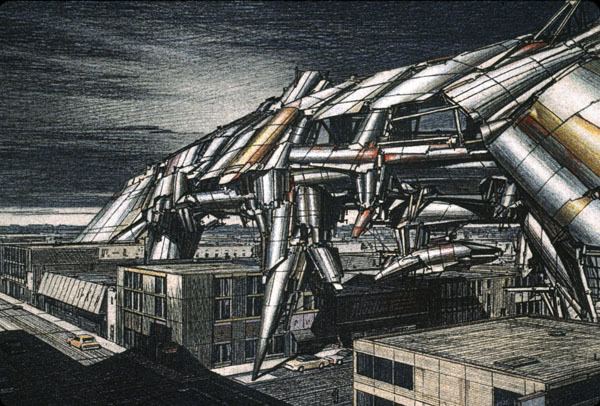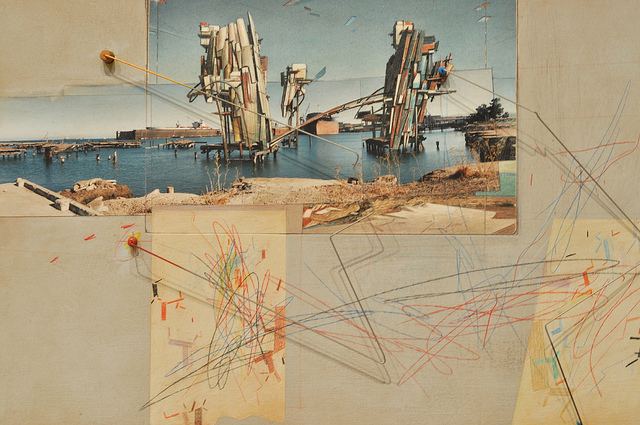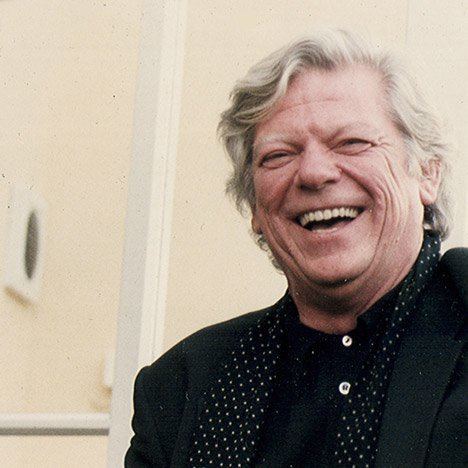Nationality American Artwork Sketchbook Role Architect | Name Lebbeus Woods Occupation Architect and artist | |
 | ||
Books Radical reconstruction, Lebbeus Woods: Anarchite, The new city, Onefivefour, The Storm and the Fall Similar People Michael Sorkin, Michael Webb, Paul Virilio, Anthony Vidler | ||
Lebbeus woods experimental space and architecture 2006 1 8
Lebbeus Woods (May 31, 1940 – October 30, 2012) was an American architect and artist known for his unconventional and experimental designs.
Contents
- Lebbeus woods experimental space and architecture 2006 1 8
- Lebbeus woods experimental space and architecture 2006 3 8
- Career
- Philosophy
- Influence on film
- References

Lebbeus woods experimental space and architecture 2006 3 8
Career

Woods studied architecture at the University of Illinois and engineering at Purdue University. While Woods called himself an architect he never received a degree in architecture nor was he ever licensed to practice architecture. He first worked in the offices of Eero Saarinen as a field representative on the Ford Foundation building designed by Saarinen in New York City. After leaving Saarinen's office he worked for a short period for the Champaign, Illinois firm of Richardson, Severns Scheeler & Associates. He also produced paintings for the Indianapolis Art Museum during that period. In 1976 he turned exclusively to theory and experimental projects. He was reported to have designed a light pavilion in Chengdu, China with Steven Holl and buildings in Havana, Cuba. In 1988, Woods co-founded the Research Institute for Experimental Architecture, a nonprofit institution devoted to the advancement of experimental architectural thought and practice while promoting the concept and perception of architecture itself.

The author of nine books, he was a 1994 recipient of the Chrysler Design Award. He was a professor of architecture at the Cooper Union in New York City and at the European Graduate School in Saas-Fee, Switzerland.
Philosophy

The majority of his explorations deal with the design of systems in crisis: the order of the existing being confronted by the order of the new. His designs are politically charged and provocative visions of a possible reality; provisional, local, and charged with the investment of their creators. He is best known for his proposals for San Francisco, Havana, and Sarajevo that were included in the publication of Radical Reconstruction in 1997 (Sarajevo after the war, Havana in the grips of the ongoing trade embargo, and San Francisco after the Loma Prieta earthquake).

Architecture and war are not incompatible. Architecture is war. War is architecture. I am at war with my time, with history, with all authority that resides in fixed and frightened forms. I am one of millions who do not fit in, who have no home, no family, no doctrine, no firm place to call my own, no known beginning or end, no "sacred and primordial site." I declare war on all icons and finalities, on all histories that would chain me with my own falseness, my own pitiful fears. I know only moments, and lifetimes that are as moments, and forms that appear with infinite strength, then "melt into air." I am an architect, a constructor of worlds, a sensualist who worships the flesh, the melody, a silhouette against the darkening sky. I cannot know your name. Nor you can know mine. Tomorrow, we begin together the construction of a city.
Woods, who envisioned experimental constructs and environments, stated that, "the interplay of metrical systems establishing boundaries of materials and energetic forms is the foundation of a universal science (universcience) whose workers include all individuals".
Influence on film
Woods sued the producers of the film 12 Monkeys, claiming that they copied his work "Neomechanical Tower (Upper) Chamber". Woods won a "six figure sum", and allowed the film to continue to be screened. The end credits state that his work "inspired" the Interrogation Room set.
Woods is credited as the "conceptual architect" for Alien 3, establishing the look and feel of the film, especially the opening sequence.
